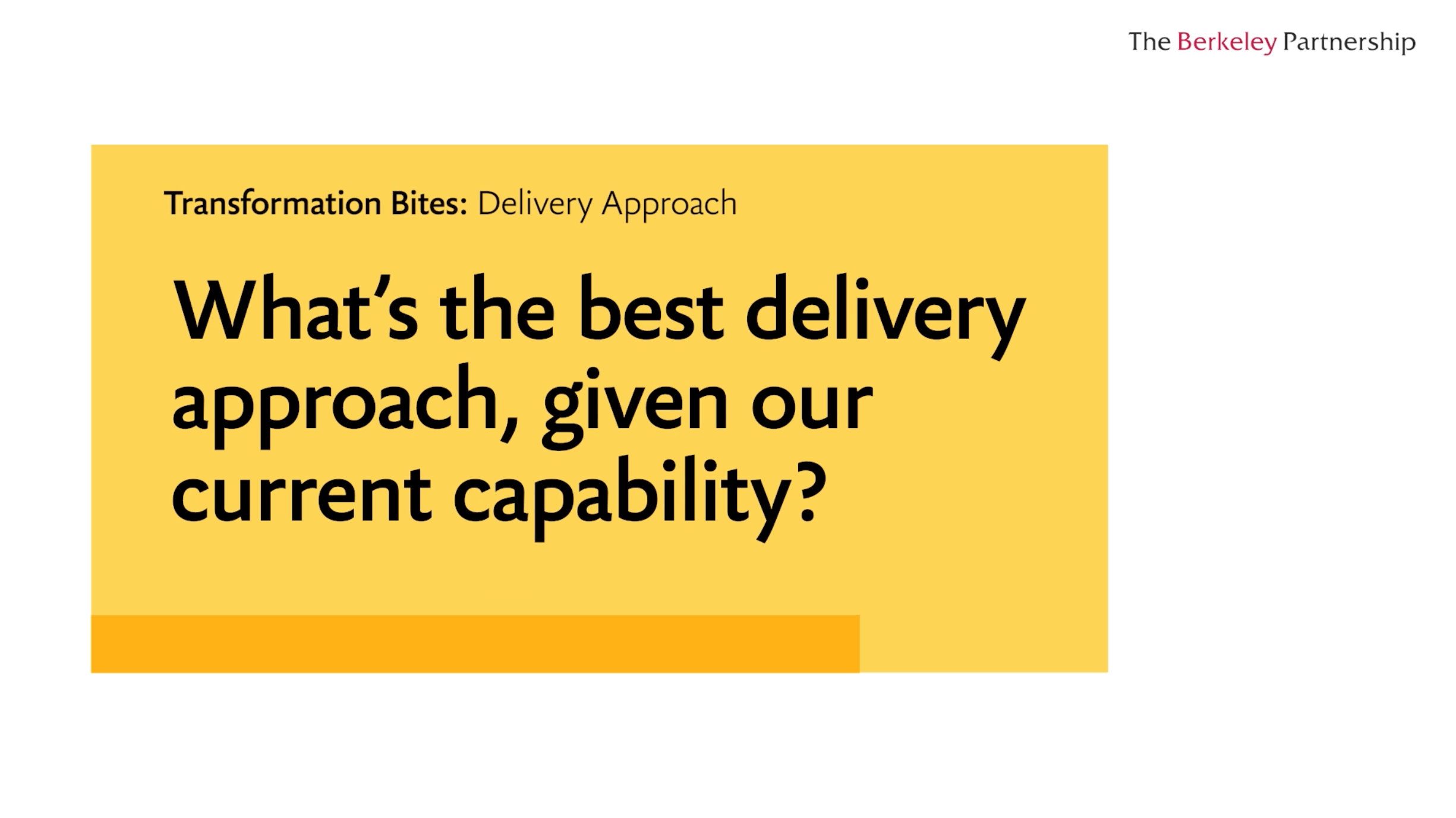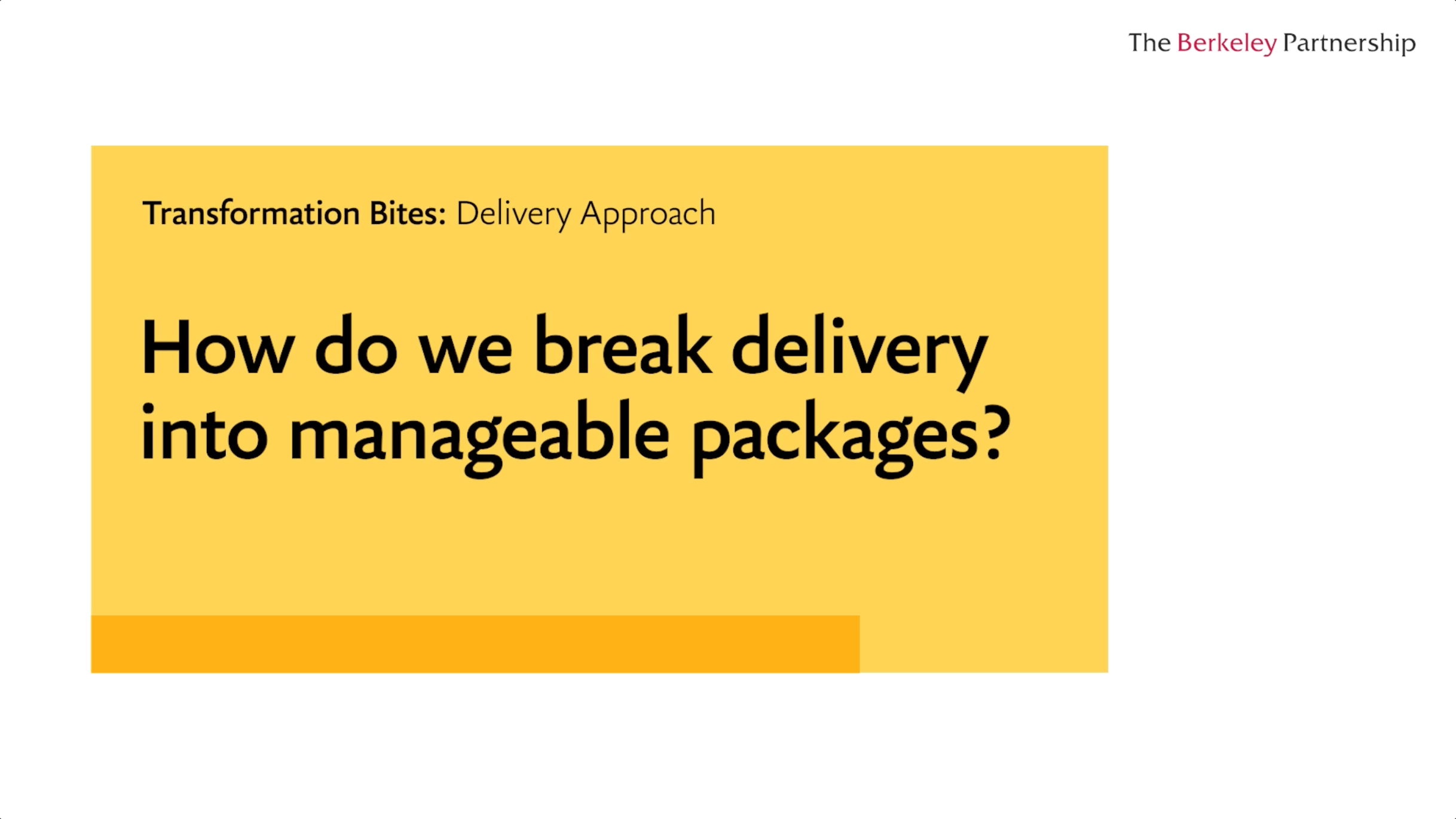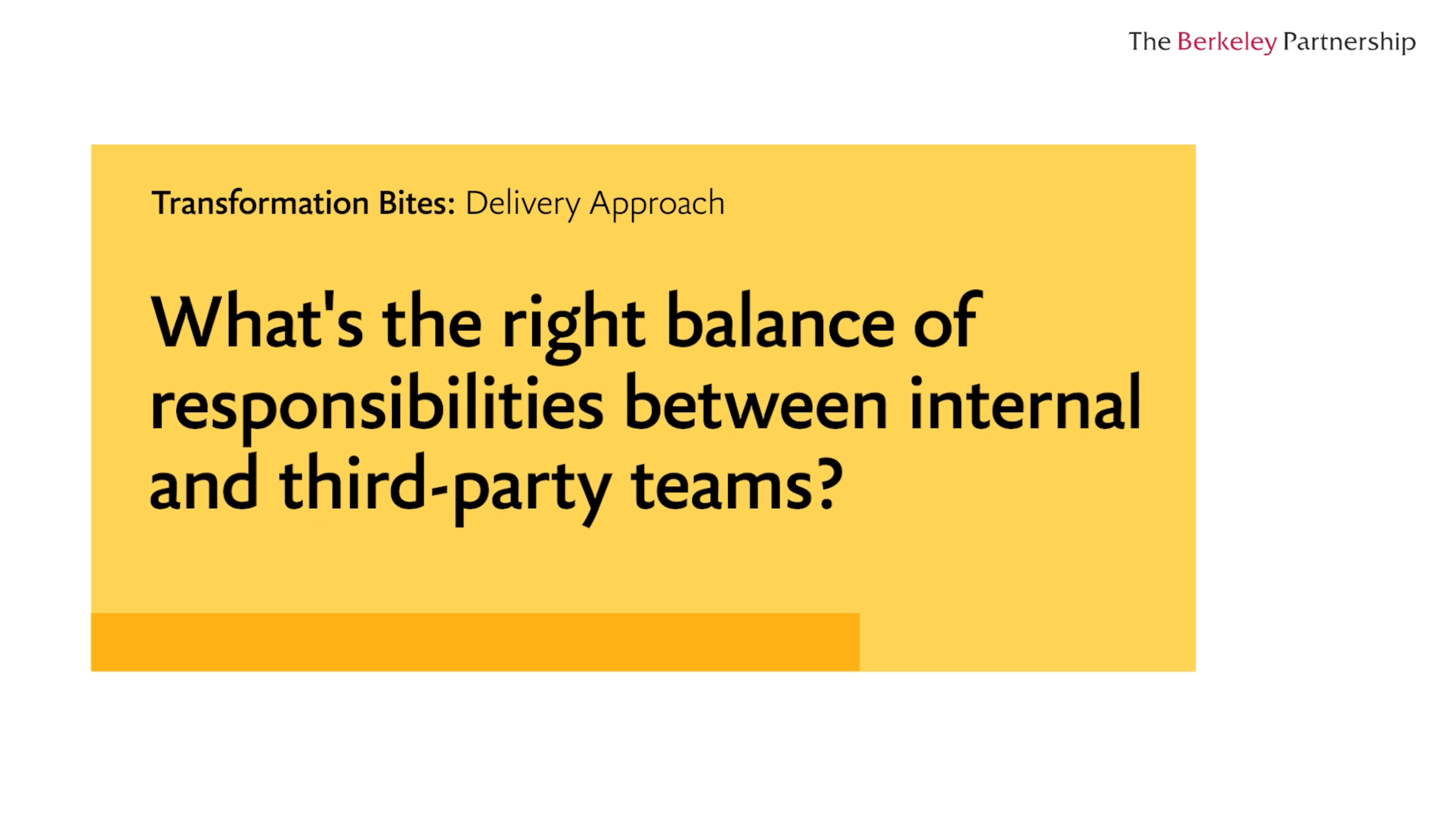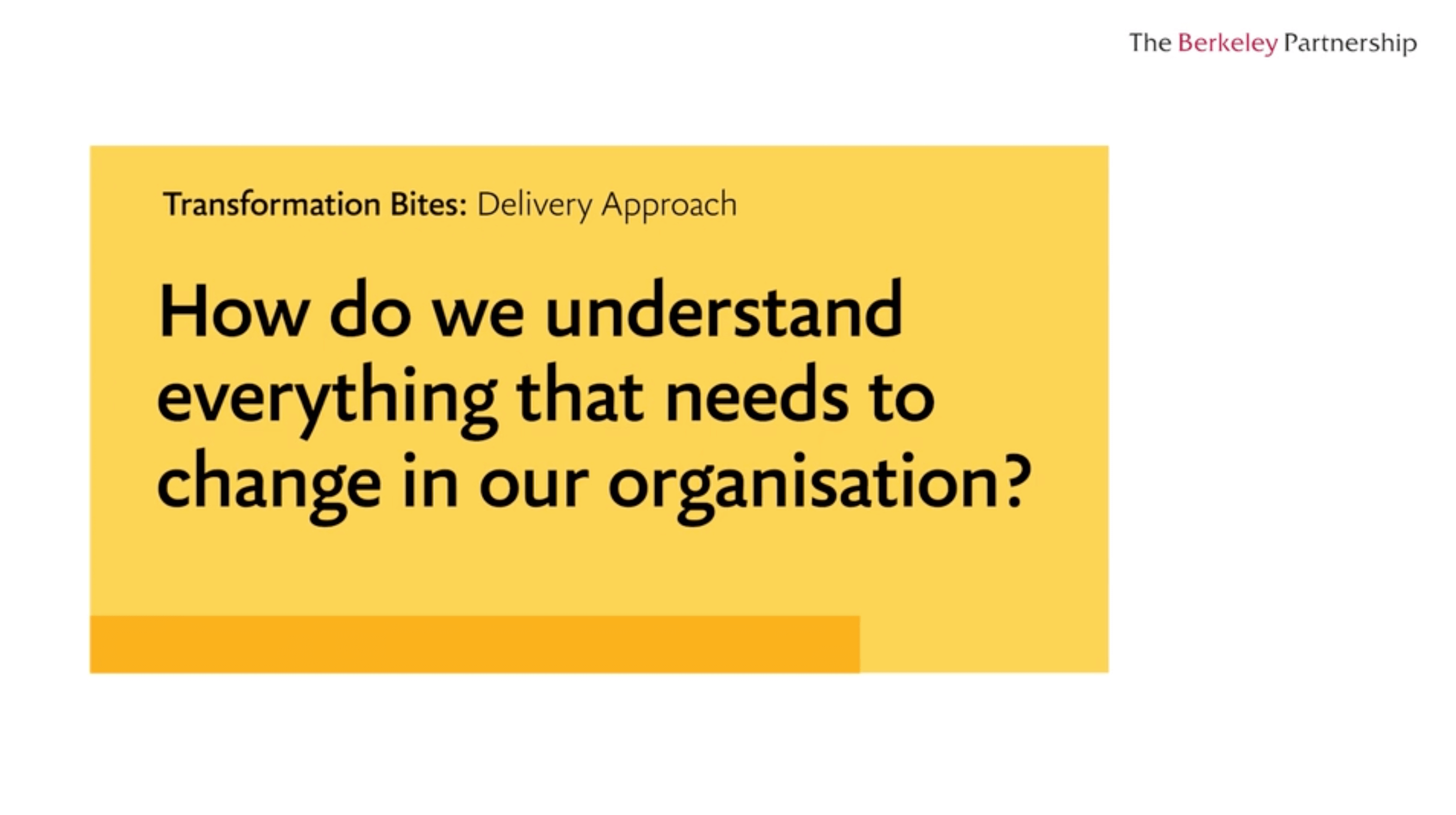Transformation
Transformation outcomes
Watch now: With finite resources, what do I prioritise?
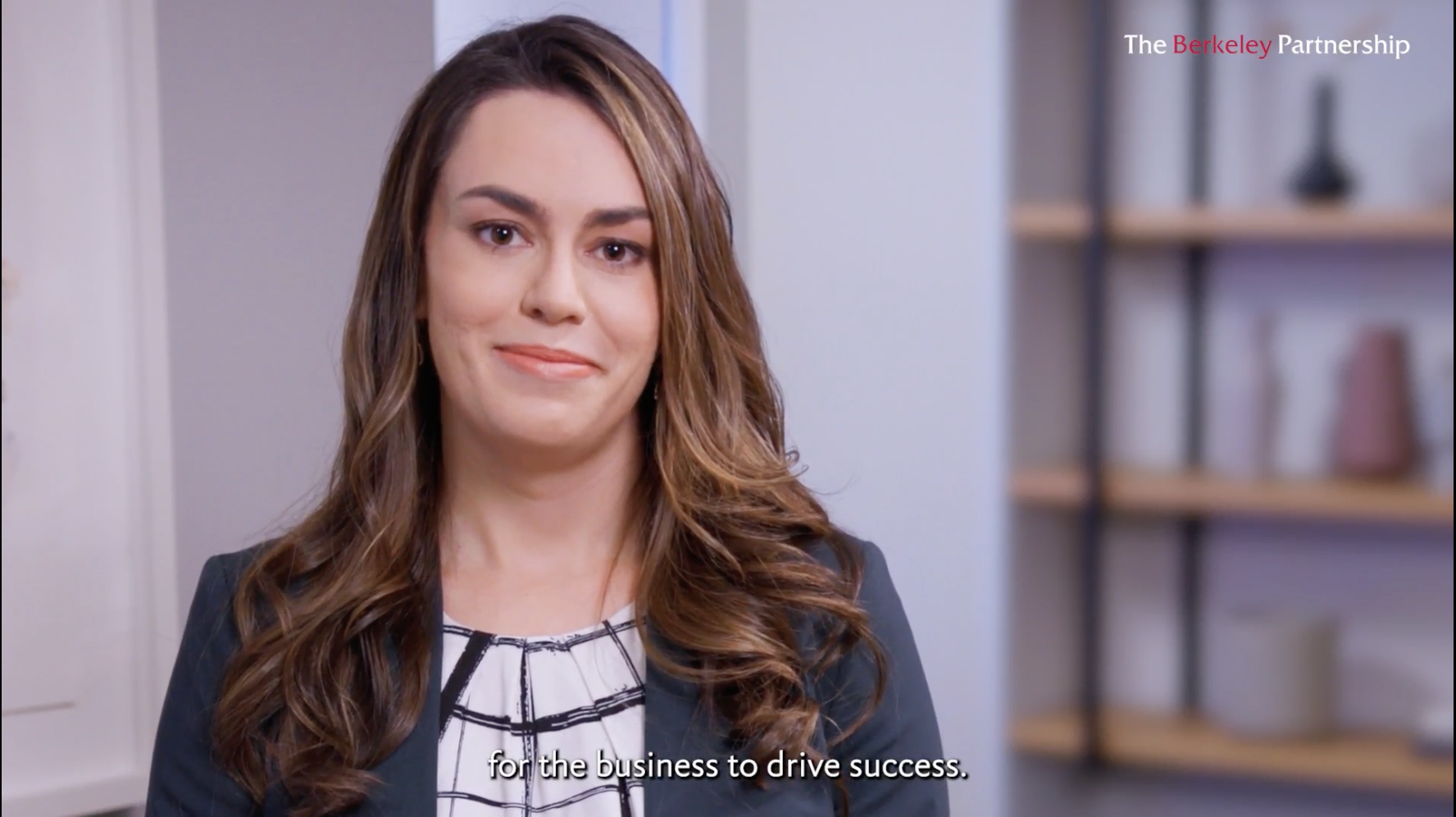
Daria: Prioritising effectively is about understanding the right drivers for success. What will really push the bar to achieve the outcomes you want, while ensuring that senior leadership supports the prioritised initiatives. You really need both for success. So what does that mean in practice?
It's extremely important to have early open discussions about the scope of delivery, while considering known constraints, such as resource capacity and the ability to absorb change. For example, this may include talking through the need to pivot people from their day jobs or phasing delivery so you're not overwhelming the business with too much change at once.
You also need to think about dependencies. All the initiatives needed to deliver the outcomes that you're looking for. So ultimately, prioritisation should be flexible. Putting the right governance in place is key to managing scope and checking in throughout the process to make sure that that scope is still fit for purpose. You need a mechanism that allows you to make fast decisions about changing priorities and assign leadership responsibilities.
Bear in mind that what executives prioritise may be totally different from what business teams prioritise - those who are actually living and breathing the transformation. You've got to marry the two to prioritise what's right and what's realistic for the business to drive success.
More on delivery approach
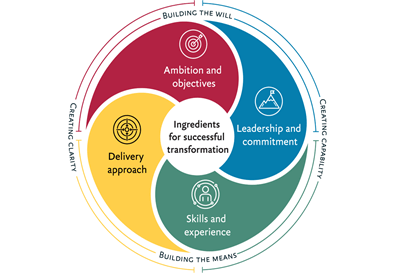
The ingredients for successful transformation
Transformation is ambitious and promises great benefits. But it's also often complex, challenging and daunting. No matter where you are on your journey, you need four key ingredients to achieve success.

Transformation health check
Use our quick and easy online health check to assess whether you have the key ingredients in place for successful transformation.

